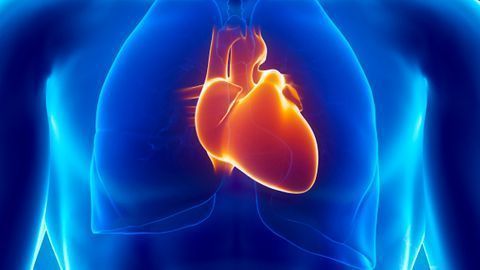
According to new research, people living with HIV, but showing no signs of cardiovascular disease, have two to three times more uncalcified coronary plaque than healthy people.
HIV-positive patients are known to have a 1.5 to 2.1 heart attack risk greater than the general population that does not carry the virus. But so far, data and findings on the uncalcified coronary plaque have been controversial and unclear.
Now, in a study published on April 20 a Radiology, researchers at the University Hospital of the University of Montreal have indeed shown that HIV is in fact associated with an increase in the prevalence of plaque and plaque load. This knowledge is critical, said the team, led by Carl Chartrand-Lefebvre, MD, M.Sc., clinical professor, because modern advances in antiretroviral drugs have changed the life expectancy of people living with the virus. .
Related Content: Radiomics Reveals Fuel Behind Coronary Artery Disease Risk: Cocaine
“People with HIV infection are now living longer and experiencing more and more age-related diseases, such as coronary artery disease (CAD),” the team said, noting that the drugs used in HIV management could contribute to the burden of the disease.
To determine whether people with HIV had different experiences with CAD and different features of coronary artery CT, the Chartrand-Lefebvre teams conducted a prospective study with 265 participants: 181 people with HIV and 84 healthy volunteers. The mean age of HIV patients and healthy participants was 56 years and 57 years, respectively.
More HIV patients than healthy cohorts smoked tobacco (30% and 11%, respectively) and more HIV patients actively took statin therapy (31% versus 18%, respectively). In addition, 92.3% of HIV-positive people had received antiretroviral therapy for an average of 13.6 years.
For the study, each participant underwent a coronary CT angiography with a CT scan of 256 sections and 370 mg / ml of iopamidol at a rate of 5 ml / sec. The team also performed a contrast-free CT scan for the coronary calcium score. For the analysis, the radiologists they interpreted were not aware of which patients were HIV-positive.
Although the analysis did not reveal any difference between the calcium score of the coronary artery and the overall prevalence of plaque between the two groups, the evaluation showed that the prevalence of non-calcified plaque and the volume visualized in CT angiography were two to three times higher in HIV patients after adjusting for cardiovascular risk factors.
“Our study shows that uncalcified coronary plaque increases in people living with HIV,” Lefebvre said. “And it has been shown that previously uncalcified plaque was associated with a worse cardiovascular outcome than calcified or mixed plaques.”
In addition, the team found that HIV patients had a 40% reduced frequency of calcified plaque. Although the difference in frequency between groups can probably be attributed to several factors, they highlighted the use of antiretroviral therapy as a likely significant contributor.
“Several studies suggest that there is likely to be an impact of antiretroviral therapy that may increase the risk of coronary artery disease, although there is a much greater benefit for people living with HIV who take antiretroviral therapy instead of don’t take it. ” dit.
According to Shenghan Lai, MD, MPH, professor in the department of epidemiology and the Institute of Human Virology at the University of Maryland School of Medicine, this study surpasses other existing studies that examined coronary heart disease in HIV patients. In an attached editorial, he explained that using volume to quantify plate load can provide a more complete representation of the plate.
“This study demonstrated for the first time that HIV infection is associated with an increase in plaque prevalence and plaque volume, and that the latter conclusion is based on a more accurate characterization of plaque load than some other previous methods, ”he said. “Coronary CT angiography should be considered the noninvasive imaging option chosen in other clinical, prognostic, and mechanistic studies of HIV-associated atherosclerosis.”
The Chartrand-Lefebvre team agreed and added that their results indicate that a healthier lifestyle that can combat atherosclerosis is particularly critical for patients living with HIV. It is imperative, the team stressed, that the group of patients be aware of the additional risks associated with smoking, diabetes, high blood pressure, obesity and lack of exercise.
In addition, they said, the results also report on how radiologists can use these scans.
“For radiologists, these results suggest that interpretation of coronary CT angiography in people living with HIV should probably include quantification of coronary plaque by subtype to allow for better stratification of cardiovascular risk,” Chartrand said. -Lefebvre.
For more coverage based on research and expertise from industry experts, subscribe here to the Diagnostic Imaging Newsletter.